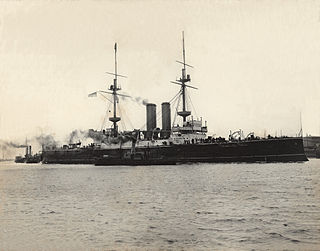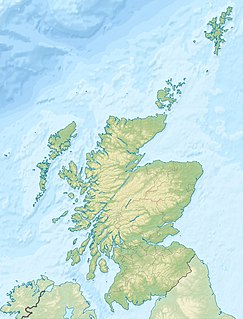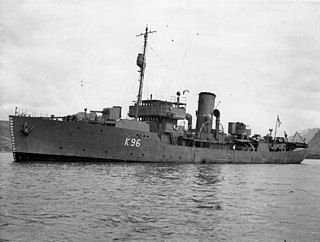SS Bengore Head can refer to one of the following ships:
- Bengore Head I was built in 1881 and was sold while fitting out to Hamburg America Line and renamed Bohemia. [1]
- Bengore Head II was built in 1883 and was sold while fitting out to Hamburg America Line and renamed Moravia. [1]
- SS Bengore Head III launched 1884 was a merchant ship that collided with the battleships HMS Vengeance and HMS Revenge on 13 June 1908 in Portsmouth, on the south coast of England. [2] The collision was discussed in Parliament. [3]
- On 20 June 1917 Bengore Head IV was torpedoed and sunk on her way from Sydney, Nova Scotia to London, UK. [1]
- SS Bengore Head IV was launched by Irvine's Shipbuilding & Drydock Co. Ltd. in West Hartlepool in 1922. [1] The engine was built by: Richardsons, Westgarth & Co. in Middlesbrough. On 9 May 1941 Bengore Head IV was torpedoed and lost. One crew member, William John McCabe was lost, the other crew members were rescued by the Norwegian merchant ship Borgfred and HMS Aubrietia. At the time of loss she was owned by Ulster Steamship Co. - G. Heyn & Sons Ltd of the Head Line. [4] [5] [6] [7]
- Bengore Head V was launched in 1944 in Germany, originally named Kalliope which was seized by the Allied Authorities in 1945 and renamed Empire Garrison . In 1947 she was purchased by the Ulster Steamship Co. Ltd. and renamed Bengore Head (V). In 1967 the ship was sold to Greece and renamed Aghios Nectarios. In 1972 sold to Cyprus and scrapped in 1974. [1]

The Hamburg-Amerikanische Packetfahrt-Actien-Gesellschaft (HAPAG), often referred to as Hamburg America Line, was a transatlantic shipping enterprise established in Hamburg, in 1847. Among those involved in its development were prominent citizens such as Albert Ballin, Adolph Godeffroy, Ferdinand Laeisz, Carl Woermann, August Bolten, and others, and its main financial backers were Berenberg Bank and H. J. Merck & Co. It soon developed into the largest German, and at times the world's largest, shipping company, serving the market created by German immigration to the United States and later immigration from Eastern Europe. On 1 September 1970, after 123 years of independent existence, HAPAG merged with the Bremen-based North German Lloyd to form Hapag-Lloyd AG.

A battleship is a large armored warship with a main battery consisting of large caliber guns. During the late 19th and early 20th centuries the battleship was the most powerful type of warship, and a fleet of battleships was considered vital for any nation that desired to maintain command of the sea.

HMS Vengeance was a pre-dreadnought battleship of the British Royal Navy and a member of the Canopus class. Intended for service in Asia, Vengeance and her sister ships were smaller and faster than the preceding Majestic-class battleships, but retained the same battery of four 12-inch (305 mm) guns. She also carried thinner armour, but incorporated new Krupp steel, which was more effective than the Harvey armour used in the Majestics. Vengeance was laid down in August 1898, launched in July 1899, and commissioned into the fleet in April 1902.






